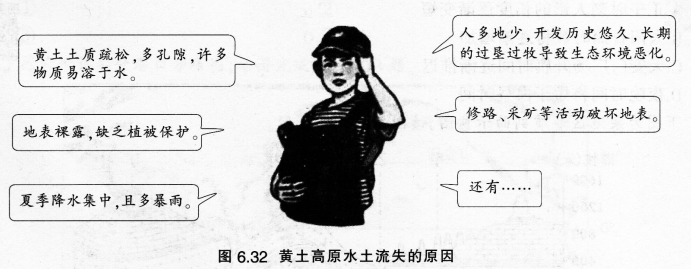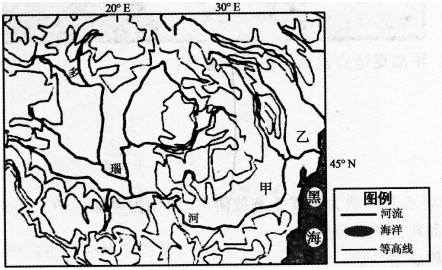设计任务:请阅读下面学生信息和语言素材,设计20分钟的英语听力教学方案。
教案没有固定格式.但须包含下列要点:
·teaching objectives
·teaching contents
·key and difficult points
·major steps and time allocation
·activities and justifications
教学时间:20分钟
学生概况:某城镇普通中学高中一年级学生,班级人数40人。多数学生已经达到《普通高
中英语课程标准(实验)》五级水平。学生课堂参与积极性一般。
语言素材:
M: Hey Betsy, did you hear the great news
W: No, Frank, I haven′t. What is going on
M: I just got a promotion, and I am going to throw huge party for all of my friends. I would loveit if you would come.
W: Wow, thanks so much, when is the party
M: I am thinking of having it on Saturday. I am hoping there will be 150 people there. Thisreally is a big promotion for me and my family.
W: Wow,150 people. That is a lot. This must be a big promotion. I would love to go. I think itwould be a great time.
M: Oh great, the more the merrier. This really is a big deal for me. We can now afford the newhouse my wife has always wanted. I just hope I don′t have to put too many hours in. I would hate tolose too much time with my family.
W: I can understand that, but let′ s keep focusing on the bright side. I can′ t wait for that party.
正确答案及解析
正确答案
解析
Teaching Contents: Listening to a dialogue about Frank ' s inviting Betsy to his party. Teaching Objectives:
(1) Knowledge objectives
①Students will learn some new words or expressions, like promotion, throw a party, the more the merrier.
②Students will know how to invite people for parties, as well as how to react to people' s invitation.
(2) Ability objective
Students' listening ability for general ideas and detailed information can be improved.
(3) Emotional objectives
①Students will learn to share their happiness with their friends.
② Students will be willing to apply their English into daily use.
Teaching Key and Difficult Points:
(1) Teaching key point
Students will know how to invite people for parties and how to react towards people' s invitation.
(2) Teaching difficult point
① Students ' listening ability for general ideas and detailed information can be trained.
② Students will make offers for their own party to their friends.
Major Steps:
Step 1 Warming up (3 minutes)
I will begin the class by sharing my experience of a fantastic birthday party last week. Then I will give them 1
minute to think about one of their unforgettable parties. And they can share it with the whole class by telling the time,the theme, the activities of that party.
(Justification: By talking about their own parties, they will recall back some related expressions under this topic.
And this will prepare them for the following listening.)
Step 2 Pre-listening (5 minutes)
I will present some new expressions first, like promotion, throw a party, the more the merrier by making up ashort paragraph--People celebrate important occasions, like weddings, promotions or birthdays. Usually they like tothrow a party to get their families and friends together and have fun. For most parties, it is the more the merrier andthat' s why people will invite a lot of people to their parties.
(Justification: It is easier to teach the new expressions with the help of context. For example, if I tell students that"throw a party" means "have or hold a party", they will not only understand the explanation, but also get to know howto use the expression by comparing the context provided.)
Step 3 While-listening (6 minutes)
First, I will play the tape once. And before they are ready, I will remind them that during listening they should notpay much attention to any specific words or expressions and all they need to do is to get the main idea of it. Afterlistening, I will invite some students to tell the class what happened, and why it happened.
Next, I will ask them to listen to the dialogue for the second time with a filling task on the blackboard.

(Justification: Listening for the first time is to train students' listening ability for general ideas and the secondtime is to train their listening ability for detailed information.)
Step 4 Post-listening (6 minutes)
(1) Students need to work with their desk-mates to do the dialogue with the help of the chart on the blackboard.
(2) Then they will be divided into groups of 4 to design a party for their parents' anniversary. They need to figureout the theme, the time, the activities and the invitation letters of this party. Two groups will be invited to share their
ideas.
(Justification: The first activity is for students to practice the targeted language point--how to invite people forparties and how to react to people's invitations. The second activity is to provide a chance for them to use thelanguage actively.)
包含此试题的试卷
你可能感兴趣的试题
阅读关于“严重的水土流失”的图文材料.按要求完成教学设计任务。
材料一《义务教育地理课程标准(2011年版)》中内容标准“认识区域”中的“环境与发展”
要求:“根据资料,分析某区域内存在的自然灾害与环境问题,了解区域环境保护与资源开发利用的成功经验”。
材料二某版本教课书中关于“严重的水土流失”的有关内容。

严重的水土流失
从图6.31可以看出,黄土高原的地表千沟万壑、支离破碎。这与我们通常所说的一望无际、平坦宽阔的高原景象大不相同。造成这种状况的主要原因,就是这里长期的水土流失。
黄土高原是世界上水土流失最严重的地区之一。这里的自然植被遭到破坏,疏松的黄土在缺少植被保护的情况下,很容易引起水土流失。特别是每遇暴雨,泥沙俱下,水土流失尤为严重。造成这里水土流失的原因,既有自然原因,也有人为原因(图6.32)。

严重的水土流失,带走了地表肥沃的土壤,破坏了农田和村庄(图6.33),使得自然灾害加剧,生态环境恶化;泥沙下泄导致河流含沙量剧增,淤塞下游河床、水库,给防洪及河道整治造成了巨大困难。
要求:
(1)设计本课的教学目标。
(2)设计本课的教学过程(包括教学环节、教学内容、教师活动、学牛活动等、并说明设计理由。
- 查看答案
材料:
下面是张老师在七年级“我们生活的大洲——亚洲”一课中的教学片段。
师:请读“亚洲地形图”(PPT显示),思考回答:亚洲的地形特征是什么
生1:……(茫然,回答不出来)
生2:青藏高原最高
师:亚洲有哪些地形区亚洲之最有哪些
(没有学生举手,教师指图讲解)
师:亚洲的主要地形区有:世界最高山脉喜马拉雅山脉,最高大的高原青藏高原,还有亚洲最大的西伯利亚平原……
师:亚洲的主要河流有哪些它们的分布与地形之间的关系是什么
(没有学生举手)
问题:
(1)分析张老师采用谈话法进行教学效果欠佳的原因。
(2)上述教学片段所涉及的知识哪些属于地理感性知识哪些属于地理理性知识
(3)简述地理理性知识的教学步骤,并选择材料中的一个知识点进行说明。
- 查看答案
材料:
下面是宋老师在八年级“交通运输方式的特点和选择”一课中的结课片段。
师:学完了“交通运输方式的特点及选择”,现在老师布置一个重要任务(PPT展示)“元旦到来要外出旅游,请你为全家拟定一个出行计划”。
生:好!
师:计划应该包括哪些项目呢
生:……
师:很好!包括目的地、交通方式、交通线路、时间安排(包括出行时间、航班、车次)、自驾与否、路费预算等。
师:告诉同学们几个“贴士”:
第一,设计自驾游的同学,请学会看地图或者路牌上的标识了解路况。
高速公路的标识:“GX”或“GXX”……如“G5”是京昆高速公路,“G56”是杭瑞高速公路(杭州到瑞丽);国道(G×××)、省道(S×××)、县道(××××)、乡道(Y×××)和专用公路(Z×××)。
第二,告诉大家一个出行的“神器”。(教师点开某旅游网站,屏幕上显示机票、酒店、火车票等信息,并讲解……
师:请同学们写出出游计划。期待大家作品。下课!问题:
(1)结合材料概括宋老师结课设计的优点。
(2)说明材料中课后作业的功能,再分别对课前预习作业和课上作业的功能进行简要说明。
- 查看答案
材料一下图为多瑙河流域局部示意图。

材料二据史料记载,甲区域有洪水发生,且一年四季均会发生水灾,乙区域内种植业发达,有“粮仓”美誉之称,是世界小麦主要产区之一。
问题:
(1)分析甲区域洪水灾害频发的原因。
(2)简述乙区域发展小麦种植业的有利条件。
- 查看答案
绘制中国疆域轮廓示意图(要求:绘制中国疆域轮廓、在图内绘制长江、黄河干流,标注名称和图名),并简要说明运用该图指导学生学习四大地理区域分布的教学步骤和教学意义。
- 查看答案